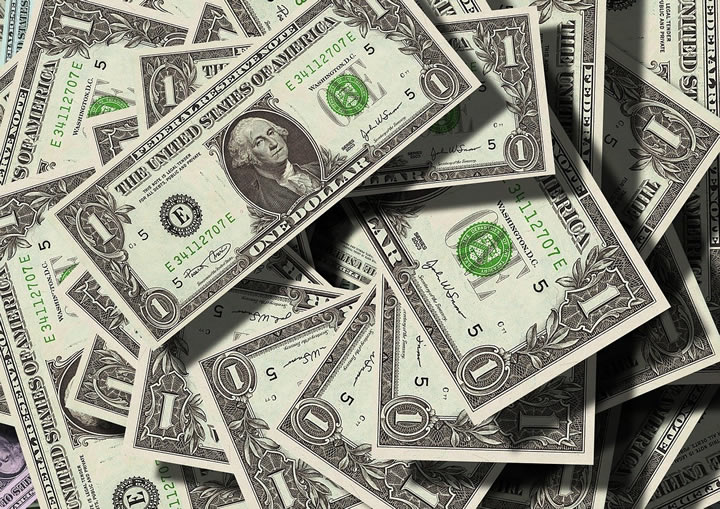Will the U.S. Dollar Lose Momentum In the Second Half of 2021?
Currencies / US Dollar Jul 15, 2021 - 01:27 PM GMTBy: Boris_Dzhingarov
As the world’s most traded currency, the US dollar has significant impacts on global trade. With interest rates at record lows and an uncertain macro-environment, it has risen at a stellar pace against major currencies in the last decade.
The US dollar is also the world’s most widely held currency, with an estimated $2 trillion in circulation. The strength of the greenback depends on a variety of factors, including economic and geopolitical stability, interest rates, inflation, and political influence.
It is important for investors and people who have exposure to the USD to understand how the dollar’s value could impact their wealth and future plans.

On the other hand, if you are a technical FX trader, it might be advisable to consider a few forex signals that may help you make an investment decision. Here, you can analyze historical patterns and try to predict the future price movements of currencies. Technical indicators include metrics such as MACD and RSI as well as support and resistance levels. According to FX traders, technical patterns are cyclical and can be combined with fundamentals to successfully predict currency trends.
What impacts supply and demand?
The U.S. is the largest economy in the world and its gross domestic product or GDP is forecast to grow by 7% in 2021. Further, the country continues to export several products and services that will impact demand positively for the USD going forward. A strong economy always attracts foreign investment while importers will also have to convert local currency to USD in order to pay for purchases.
As the U.S. economy continues to expand post-COVID-19 and consumer demand increases, corporations will increase capital expenditure investments. It means they will have to raise additional capital to support growth and may issue bonds in international markets. Even in the case of equity capital raises, international investors looking to gain exposure to the U.S. market will have to sell their domestic currency to purchase USD and buy company stock.
Due to the sheer size of the U.S. economy, the greenback is considered a safe haven especially when the macro-economic situation is uncertain and volatile. Several countries are reeling under the effects of the COVID-19 pandemic which means demand for the USD will continue to remain robust in the near term.
Inflation and interest rates
According to a report from the Financial Times, the U.S. dollar gained momentum due to a better-than-expected increase in consumer prices. The dollar index has experienced an upward trajectory since mid-June when the Federal Reserve disclosed an interest rate hike could be on the cards sooner than previously estimated, in order to offset rising inflation rates.
According to data from the U.S. Bureau of Statistics consumer prices rose by 5.4% in the 12 months prior to June 2021, which was the strongest rise since August 2008.
The Federal Reserve has kept interest rates low for several years which has allowed easy access to capital for enterprises and individuals. Interest rates were further reduced amid the pandemic and the government also initiated a multi-trillion-dollar quantitative easing program to support the economy from collapsing due to economic shutdowns.
Now, there are fears of rising inflation rates as the economy rebounds from the depths of COVID-19 as well as excessive money supply. The Fed expects inflation for 2021 to touch 3% while it is estimated at 2.1% for 2022. One way to counter inflation is to increase borrowing rates which will also reduce the money in circulation.
Now, in case the Federal Reserve increases Treasury bond rates, it will make fixed income instruments attractive to investors in the U.S. as well as other international markets. The increase in demand for bond instruments will most likely lead to an inflow of foreign exchange currencies which in turn will increase the demand for the USD pushing it higher.
What next for the US dollar?
We can see that it's difficult to predict the trajectory of the greenback as currencies are impacted by a multitude of factors. In case the U.S. economy remains strong the dollar will continue to outpace other major currencies. Alternatively, if economic conditions worsen, the Federal Reserve may have to step in again by printing money and selling sovereign bonds to investors which might have a negative impact on the USD.
By Boris Dzhingarov
© 2021 Copyright Boris Dzhingarov - All Rights Reserved
Disclaimer: The above is a matter of opinion provided for general information purposes only and is not intended as investment advice. Information and analysis above are derived from sources and utilising methods believed to be reliable, but we cannot accept responsibility for any losses you may incur as a result of this analysis. Individuals should consult with their personal financial advisors.
© 2005-2022 http://www.MarketOracle.co.uk - The Market Oracle is a FREE Daily Financial Markets Analysis & Forecasting online publication.



